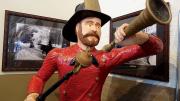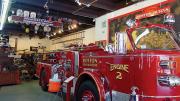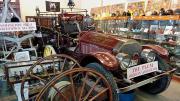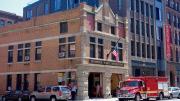In 1891, firefighters at the Congress Street station house typically worked nine days straight, then got a day off to “go home and get a change of clothes and more food,” says William Warnock, director of the Boston Fire Museum now occupying the historic building. Horses were also on hand, he adds, to pull hose wagons and a coal-fired, steam-powered pumper akin to the shiny Manchester, New Hampshire-made Amoskeag model from 1882 that’s on display.
The eclectic, one-room museum has hundreds of artifacts—including a hand-operated, hand-drawn Ephraim Thayer pumper from 1792—that date to the Colonial-era bucket brigades, and help convey “a sense of history and the dangers of fire, and how firefighting has evolved,” notes Warnock, the deputy fire chief in Hampstead, New Hampshire, and a member of the all-volunteer Boston Sparks Association that runs the place. Visitors are free to climb the 1926 American LeFrance fire engine, used when firefighters entered smoke and flames protected by little more than rubber coats and boots, and a leather helmet. The old station house is also packed with helmets, badges, medals, uniforms, hoses, buckets, speaking trumpets, and hydrants. There are memorabilia from some of Boston’s worst conflagrations, and vestiges of the world’s first alarm telegraph system, which debuted in Boston in 1852, along with heartfelt tributes to those who have died in the line of duty, most recently Lieutenant Edward J. Walsh Jr. and firefighter Michael R. Kennedy, who were trapped in a Back Bay apartment fire in 2014.
Boston was the first town in the 13 colonies to organize a paid fire department—in 1678, well before the landmark 1760 blaze that destroyed nearly 350 structures around Beacon Hill. “As the buildings got taller, and the fires bigger,” Warnock notes, “they started to introduce career firefighters, in fire wards.” Steam-powered apparatus appeared in the 1850s. Even so, the “Great Fire of 1872” burned for 12 hours, destroyed 776 buildings, and led to the deaths of at least 30 people in what’s now the financial district. Starker still in recent memory—Warnock has talked with firefighters who responded—was the Cocoanut Grove disaster of 1942. The fire was doused “within an hour,” he recounts, in front of a glass case commemorating the event, “but the smoke and flames only took minutes to kill 492 people.”












